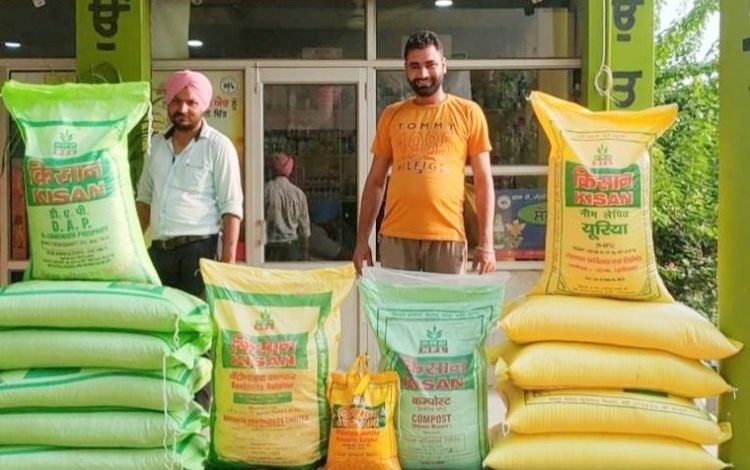Daily Current Affairs for UPSC
Govt included non-urea fertilisers under price control
Syllabus: Agriculture[GS Paper-3]

Context:
- The Department of Fertilisers has provided guidelines for assessing the appropriateness of the maximum retail price for non-urea fertilisers included in the Nutrient-based Subsidy scheme.
- The government has placed “reasonable pricing” controls on di-ammonium phosphate (DAP), muriate of potash (MOP), and other fertilisers that receive support from the National Biosecurity (NBS) program.
Key Points:
- The guidelines will expand the current cost monitoring and price control measures for urea to other fertilisers.
- They will go into effect on April 1, 2023. The guidelines set maximum profit margins for importers, manufacturers, and integrated manufacturers. Companies that earn excessive profits will be required to refund the amount to the Department of Fertilisers by October 10 of the following fiscal year.
- The guidelines also impose indirect controls on the maximum retail price of non-urea fertilisers based on the total cost of sales.
- Fertiliser companies will be responsible for self-assessing unreasonable profits based on approved cost data.
- If companies fail to return the money within the specified time, they will be charged interest at a rate of 12% per annum on a proportional basis.
Nutrient Based Subsidy (NBS)
- NBS fertilisers are not subject to government price control like urea. Instead, their maximum retail prices (MRPs) are determined by the market and set by the companies selling them.
- The government provides a fixed subsidy per tonne of these fertilisers, based on their nutrient content.
NBS Scheme:
- The NBS policy of the Department of Fertilisers has been in operation since 2010 and is directed to solve the issue of P&K fertilisers use problems, which is essential for achieving a favourable balance between NPK fertilisation.
- On the basis of its nutrient content fertilisers are manufactured under subsidy price accepting urea based fertilisers.
- Further special bonuses are allocated to fertilisers containing secondary nutrients and micronutrients.
- The NBS Scheme aims to achieve three goals: food security, improved agriculture productivity and proper balance of fertiliser nutrients.
New guidelines of Department of Fertilisers (DoF) :
- Starting from April 1, 2023, new guidelines have been introduced that set maximum profit margins for fertiliser companies.
- Importers will be allowed a maximum profit margin of 8%, manufacturers 10%, and integrated manufacturers (those producing finished fertilisers and intermediates) 12%.
- Companies that earn profits exceeding these percentages in a financial year will be required to refund the excess amount to the Department of Fertilisers by October 10 of the following fiscal year.
- Indirect MRP controls form part of the new regulations that cater for non-urea fertilisers, and they limit profits which companies can make from sales.
- Profit will be computed as a function of the total costs of sold goods which are made up by production/import costs, running expenses, administrative and distribution charges and interest and financing expenses.
- Dealers will be able to claim 2% of the maximum retail price for DAP and MOP fertilisers, and 4% for other fertilisers under the product codes.
- The guidelines stipulate that fertiliser companies should follow suit by conducting an evaluation of profits, visualising what needs to be done and submitting a report to the Department of Finance before October 10th for the third year.
- The Department of Finance will subsequently assess the reasonableness of the profits on February 28 th every year in order to check the eventuality where some companies may hold onto too much profit that requires recovering.
Conclusion:
- The new rules will extend the current practices of cost monitoring and price control in urea fertilisers to cover other forms of the commodity.
- In the whole quote, Urea price has not changed since 2012 involving only a 5% up in neem marking.
- Alongside urea fertilisers, this already informal price control system includes other non-urea fertilisers. These new anticipations will work towards price control of fertilisers.
Source: Indian Express





.png)



